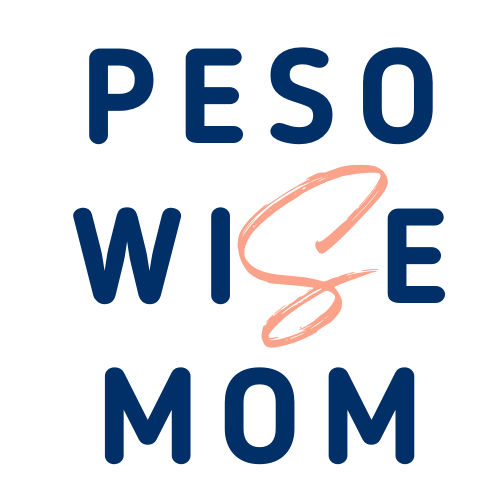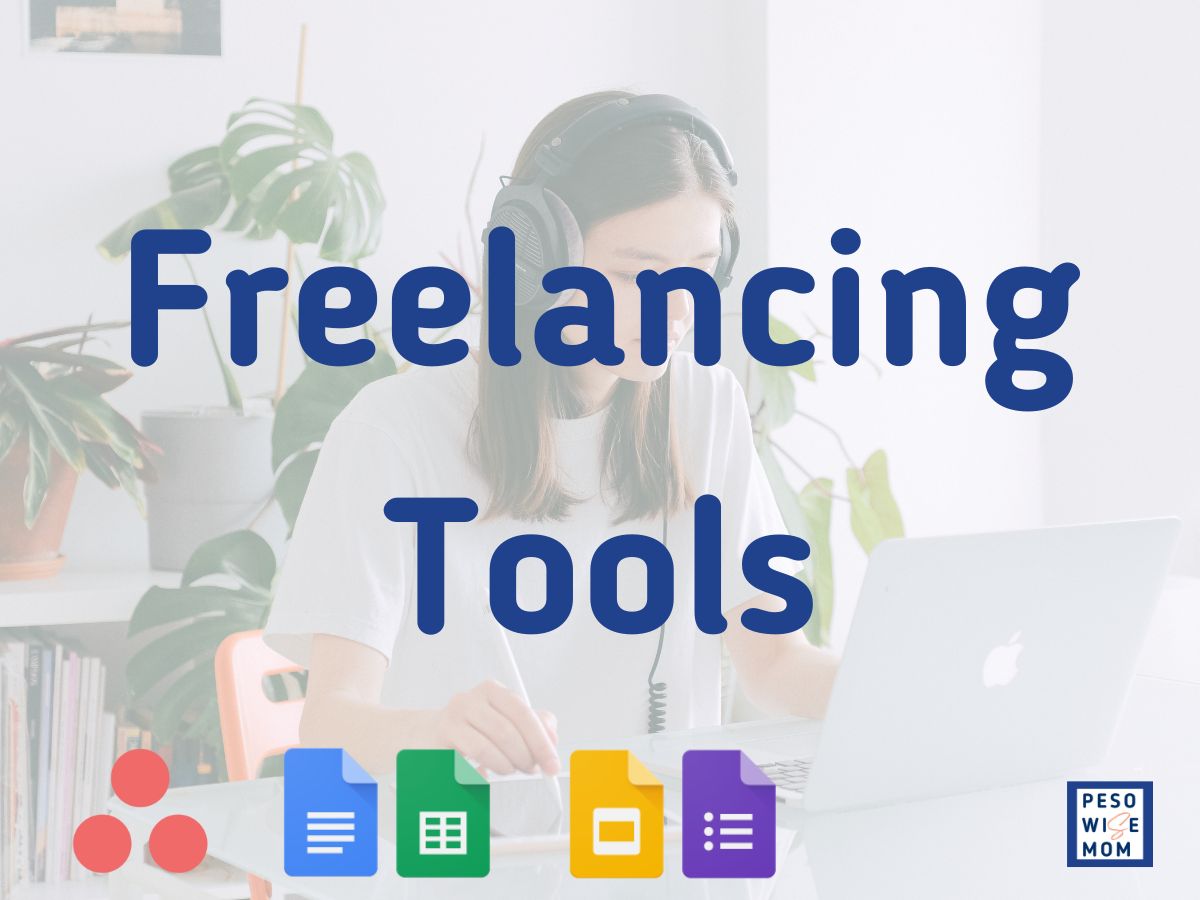Freelancing has been growing for the past few years, and if you’re one of those people who have heard about it and is wondering how it works, you can read more about it in our Freelancing 101 .
Getting started in freelancing can feel overwhelming. There are many things to consider, from finding clients to managing projects and staying organized.
That’s where freelancing tools come in. Freelancing tools can help you streamline your workflow, boost productivity, and impress clients.
The best part?
Many free freelancing tools are available, so you don’t have to worry about where to get money to get started. These tools make it easier to begin your freelancing journey.
In this guide, we will explore some fundamental tools you can start using as a beginner in freelancing.
We’ll explore project management apps, communication platforms, time trackers, file-sharing solutions, and some bonus tools for specific freelancing fields. Plus, we’ll provide tips on using these tools effectively.
So, let’s go through some of these tools!
Free Project Management Tools
Let’s start with the project management tools. As a freelancer, you will be managing some projects and need tools to organize things for you and your client.
These tools can help you stay organized and on top of your workload.
Juggling several projects, deadlines, and client communication can quickly become overwhelming. Free project management tools can be the solution!
Let’s review some free apps that can help you visualize tasks, set deadlines, collaborate with clients, and keep everything running smoothly.
Trello
This popular tool uses a board-and-card system, making it easy to visualize your workflow.
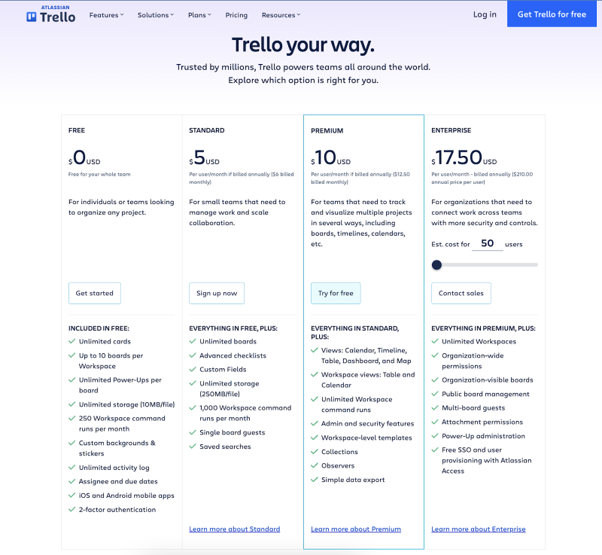
Create boards for different projects, then add cards for individual tasks. You can move cards between lists (e.g., “To Do,” “In Progress,” “Done”) to track progress and see what needs your immediate attention. Trello also allows you to collaborate with clients by assigning tasks, adding comments, and attaching files directly to cards.
Trello offers a free plan, but you can upgrade to their higher version if you need the higher features. As a beginner, this is already very helpful.
Here’s their pricing, or visit their website to sign up.
Asana
Another tool you can check out is the Asana project management tool.
Asana offers a more robust project management experience.

You can create tasks or subtasks and assign them to yourself or your clients. Set due dates, track progress with percentages, and have conversations directly within tasks. It has more features than Trello’s if you are in the paid version.
Asana also boasts a powerful search function, making it easy to find specific information across all your projects.
For free accounts, though, the collaboration is limited.
You can visit their website for more information.
Notion
The notion app is another powerful project management tool if you study how to maximize its features.

Think of Notion as your all-in-one workspace.
It combines features of project management, note-taking, wikis, and databases into a single platform. You can create project pages, to-do lists, and meeting agendas and even share them with clients for real-time collaboration. Notion’s flexibility allows you to tailor it to your specific workflow needs.
They also offer a free version, but collaboration is limited if you’re using the free version. Our company uses the paid version of this, and it’s working well for our team so far.
The free version is good, though, if you’re working alone and don’t need to share tasks with other assignees. You can still share the page with your clients, and they can view them online.
Free Communication Tools
Another important tool you need in freelancing is the communication tools. These tools are for your communication with your client or your team.
Here are several free communication tools available that will allow you to stay connected with clients while you’re still starting, be able to build trust, and ensure projects run smoothly.
Google Chat
While starting with freelancing, you can leverage Google Chat, a free feature within Google Workspace, for seamless communication with clients.
Since most people already have a Gmail account, Google Chat provides a familiar platform that doesn’t require additional setup for you or your clients. This tool allows for real-time messaging, perfect for quick questions, updates, or clarifications.
Google Chat also integrates file sharing and video calls, keeping everything centralized and fostering efficient collaboration. Always maintain a professional tone and set client communication expectations to ensure a smooth workflow.
Slack
If you prefer a tool outside of Google, you can check out Slack.
Slack is a messaging tool that provides real-time communication and collaboration for teams.
It allows you to create channels for specific projects, have one-on-one conversations with clients, and easily share files. With Slack, you can quickly update your team members, hold brainstorming sessions, and promote open communication within the team.
We are currently using the paid version of Slack in our team to create several channels, but while you’re still starting, you can start with the free version.
Discord
Discord is another communication tool similar to Slack. Discord is gaining popularity, particularly among creative freelancers.
Discord boasts features like voice and video chat, screen sharing, and custom emojis, making it a great choice for fostering a more casual and engaging communication style with clients.
Another app you can consider is WhatsApp.
WhatsApp offers a distinct advantage for freelancers since many people globally rely on WhatsApp, and it bridges the gap between clients who might not use Google or prefer a different platform.
Like Google Chat, WhatsApp provides free messaging and calling, keeping project communication budget-friendly. Its familiar interface makes navigating easy for you and your client.
WhatsApp also allows the sharing of multimedia content like images, videos, and documents directly within chats, streamlining information exchange. For an extra layer of security, WhatsApp offers end-to-end encryption for messages (keep in mind this doesn’t extend to cloud backups).
One thing to consider is that it can be challenging to maintain boundaries between work and personal life if you are already using WhatsApp for personal chats.
Iff you opt for this as a communication tool, consider using a separate number dedicated solely to clients to effectively leverage WhatsApp for business.
Google Meet
If you need apps for video calls,, consider using Google Meet.
Since Google Meet integrates with Google Workspace, most clients with a Gmail account can easily participate without needing downloads or extra accounts.
Google Meet allows screen sharing, which is perfect for presentations, brainstorming sessions, or real-time collaboration. It also functions flawlessly across desktops, laptops, and mobile devices, allowing you and your clients to connect from anywhere.
The free version is limited to up to 45 minutes, so you have to make sure that you plan your meetings ahead of time and inform your client just in case the meeting gets cut.
Zoom
Another popular video communication tool is the Zoom app.
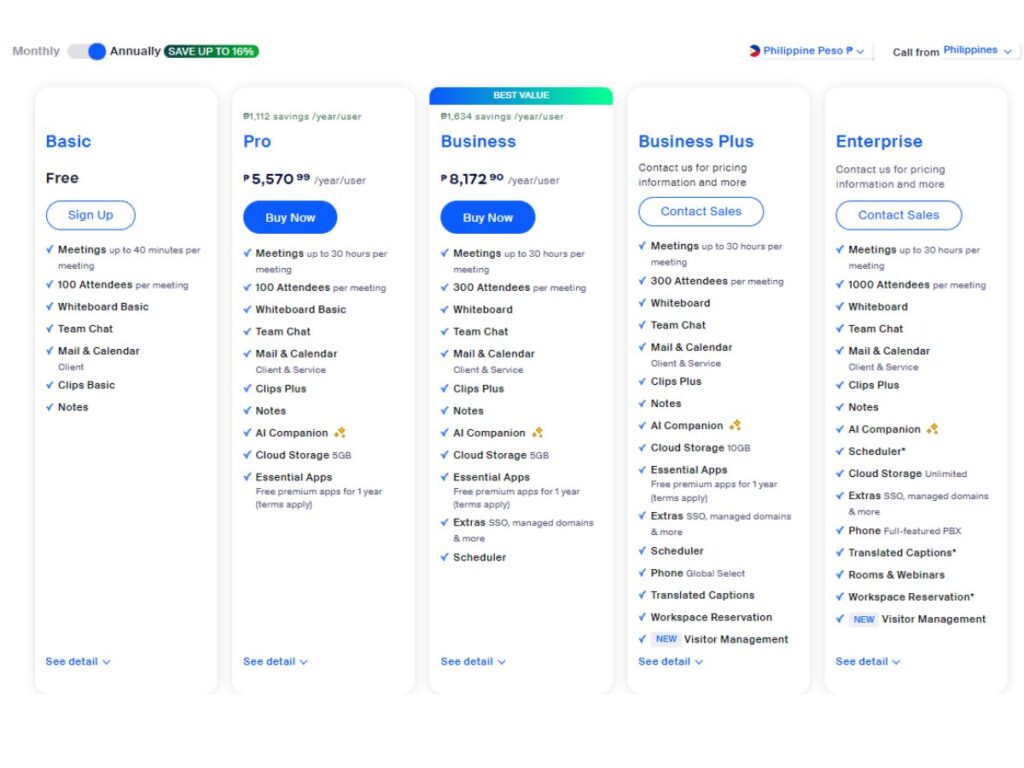
Zoom offers more than just basic video conferencing. It also offers breakout rooms for focused discussions, virtual whiteboards for brainstorming sessions, and even real-time polls to keep clients engaged.
These features can help you conduct interactive and productive meetings with your clients. Like Google Meet, Zoom offers a free tier that allows unlimited one-on-one and group meetings of up to 100 participants for a limited time.
Zoom is a budget-friendly option for freelancers starting. You can also share your screen with clients to showcase your work, walk them through presentations, or collaborate in real time.
One of the features I love about Zoom is that it allows recording meetings for future reference.
Zoom also allows scheduling meetings and sending invites, and you can integrate Zoom with your calendar.
Free Time Tracking Tools
As a freelancer, your time is your most valuable asset. Keeping track of your time on different tasks is crucial for Accurate Billing and Productivity Insights.
As a freelancer, you need to accurately track your time to ensure you’re billing clients fairly for the work you do, and since you are also starting, analyzing your time logs can help you identify areas where you can improve your efficiency and streamline your workflow.
Here are several excellent free time tracking tools available for freelancers.
Toggl Track
This user-friendly tool lets you start and stop timers for different tasks easily with a single click.
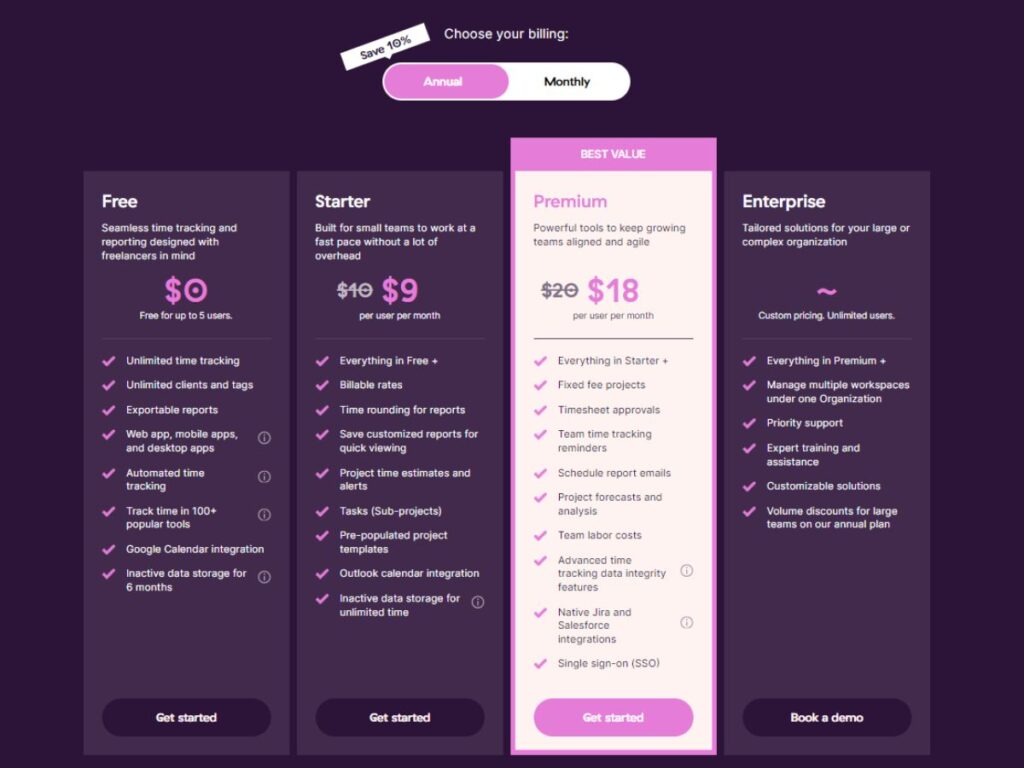
Toggl Track also offers basic reporting features, allowing you to see how much time you’ve spent on specific projects and clients, and if you need to send a report to your client, you can just download a copy in PDF or CSV format and send them a summary of your tracked time.
Clockify
Another similar tool is Clockify.
Clockify allows you to create projects, manage tasks, and generate basic invoices directly within the platform. This makes it a great all-in-one solution for freelancers who want to streamline their workflow.
Harvest
Another tool you can check out is Harvest.
This popular tool is known for its user-friendly interface and robust reporting features. Track time, categorize it by project and client, and generate detailed reports you can share with clients for transparent billing.
Free File Sharing and Storage Solutions
File storage is one of the most important tools you need as a freelancer because you will create and share various files with clients throughout your projects.
It’s very important to have free file-sharing and storage solutions for all your activities. Your storage solution tools allow you to securely store your files, share them with clients easily, and collaborate on documents in real time.
Here are some of your options:
Google Drive
This is my personal favorite and everyone’s favorite cloud storage solution.
Google Drive offers a free 15GB storage plan. You can upload documents, presentations, images, and more.
You can share files and folders with clients easily, allowing them to view, download, or even collaborate on documents in real time with Google Docs, Sheets, and Slides.
The best part is that every Google account has this, so it won’t be so hard for you and your client to use, and your client will most likely be familiar with it.
Dropbox
Another popular option is Dropbox.
Dropbox offers a free 2GB storage plan. You can easily upload, share, and collaborate on files like Google Drive.
Dropbox also boasts a user-friendly mobile app, making accessing your files on the go convenient.
Mega
If you need more storage space, check Mega, as they offer a free 20GB plan.
This cloud storage solution is known for its focus on security and privacy. You can upload, share, and collaborate on files, all with the added benefit of robust encryption features.
If you are using Google Drive, you probably won’t need more storage space, but if you work with large design files or videos, you might need to check Mega as an additional storage. Also, if you handle sensitive client data, a platform with strong encryption features, you can use Mega as your client’s storage.
These are some of the free storage you can utilize, but remember that free plans often come with limitations, so always implement a data backup strategy.
Consider backing up important files to an external hard drive or another cloud storage service for added peace of mind.
You can check out their plans for more storage space if you need more.
Free Tools for Writers/ Copywriters
One of the things you can offer as a freelancer is being a copywriter or a writer.
Suppose you choose this type of service. There are tools you can also utilize in writing.
Google Docs or Microsoft Word
As freelance writers, you have two main options for free word processing: Google Docs and Microsoft Word. They both serve the same purpose but offer distinct advantages depending on your workflow.
If you prioritize collaboration and budget-friendly options, then Google Docs can be your best option. Multiple users can work on a document simultaneously, and you can see edits in real time just in case you need to work with your client on certain content.
The best part is Google Docs is completely free with a Google account and is accessible from any device with a web browser. This allows you and your clients to work together seamlessly, regardless of location. Google Docs also automatically saves your work for easy revisiting.
Microsoft Word works very similarly but has extensive capabilities for complex layouts and specific style guides. Also, Google Docs relies on internet access, while Microsoft Word can be accessed offline.
So you can combine both if you’re working in both online and offline setups.
Grammarly
Writing content also requires some proofreading. This is when you will need a tool like Grammarly. You can sign up for free, and it has the basic features, but this is very helpful and worth subscribing to.
They also have a browser extension that acts as your grammar fairy godmother.
It checks your writing for grammar and punctuation errors and even suggests stylistic improvements. The free version offers a lot of features for writers of all levels.
ChatGPT
The rise of AI helps all content writers. AI’s like ChatGPT are now being utilized and can especially be very helpful if you are experiencing writer’s block.
You can sign up for free and study more about how you can come up with prompts that will be helpful for your writing.
Gemini AI
Another tool that is very similar to ChatGPT is Google’s Gemini AI. It works exactly like ChatGPT, and it’s also a free tool.
It’s okay to utilize these tools, but you have to review your written content and edit it to make it understandable to the readers.
It’s also important to double-check the data provided by these AI.
AI Chekers
With the rise of AI, it’s best to go through your content using an AI checker to ensure that search engines will not recognize your content as 100% AI-generated.
Search engines might not rank your content just because it’s purely AI.
To avoid being detected as 100% AI content, make sure you edit the content that’s been generated using AI. Double-check the data and personalize the content as much as possible.
One of the free AI checkers you can use online is Quillbot Free AI Checker, which you can get up to 1200 words. You can cut your content if your content is higher than 1200 words.
You can also try Scribbr and AI Detector. They also have limits as to a number of words, but that’s how it normally works when it’s a free service.
Plagiarism Checkers
Another one you have to make sure to check is Plagiarism, you have to make sure that your content are not plagiarized because you will definitely get in trouble if it’s 100% plagiarized.
I think you don’t have to worry about this much if you personally wrote the content from start to finish, but if you asked someone to write content for you or wrote your content through an AI app, you definitely have to check it.
Now, you can also use free sites, but like the AI detector apps, there are normally limits for the number of words these free ones can use.
You can check some: Small SEO Tools, Plagiarism Detector and Grammarly.
Free Tools for Designers and Developers
Canva
This web-based design platform is a game-changer for freelance designers. Canva offers a vast library of free templates, design elements, and stock photos. Create stunning social media graphics, presentations, and posters, even with limited design experience.
Gemini AI Image
AI is another innovation you should not miss when it comes to creating unique images.
There are other AI image generators out there but most of them are paid. You can explore some of the well know AI image generators and see what works best for you before subscribing to any.
GitHub
For developers or coders, GitHub is an essential tool. This online platform allows you to version control your code, collaborate with other developers, and showcase your projects to potential clients. GitHub offers a free plan with basic features, which is perfect for freelance developers who are still starting.
ChatGPT
AI are also trained to create codes for web development tasks and some of the web developers I know alos mentioned utilizing the tool as well and it does make their life easier.
Remember: These are just a few examples, and many other free tools are available for various freelancing specializations. Explore online resources and niche communities to discover the hidden gems that can supercharge your specific workflow.
Tips for Choosing Freelancing Tools
Now that you’ve got a toolbox full of fantastic free tools let’s explore how to use them effectively to maximize your freelancing success:
- Choose the right tool for the job – Don’t overwhelm yourself using every available tool. Identify the features you need most and select the tool that best fits those needs.
- Check tool Integrations – Many free tools offer integrations with each other. For example, you can connect Trello with Toggl Track to automatically track time spent on specific tasks. Explore and utilize these integrations to streamline your workflow and save valuable time.
- Review free plans and limitations – Understand the limitations of free plans before relying solely on them. Some tools restrict storage space, features, or several collaborators. As your freelancing business grows, consider upgrading to paid plans for enhanced functionality.
- Check Reliability and Maintain data backups – Don’t solely rely on free cloud storage for your critical data. Regularly back up important files to an external hard drive or another cloud storage service to ensure you don’t lose valuable work.
Conclusion
The free tools explored in this guide provide a fantastic starting point, empowering you to manage projects, communicate seamlessly with clients, track your time effectively, and share your work securely.
The key to success lies in finding the tools that work best for you and using them strategically. As you build your freelancing experience, explore new tools, experiment with different workflows, and discover what helps you achieve optimal productivity and client satisfaction.
We hope you got some good tools from this article and put the tips from this guide into action.
Good luck in your journey to a successful freelancing career!
Remember to share your favorite free freelancing tools in the comments below!
